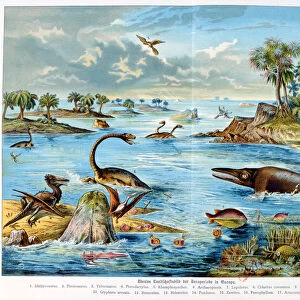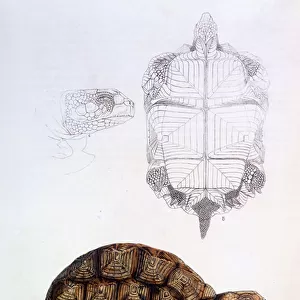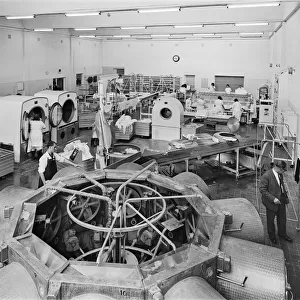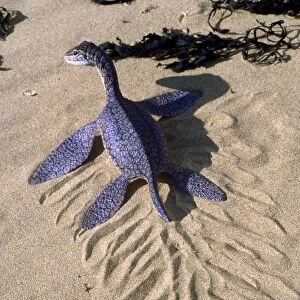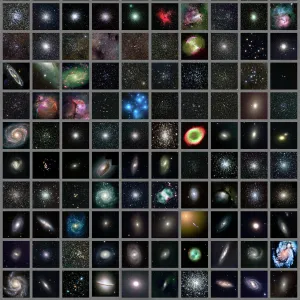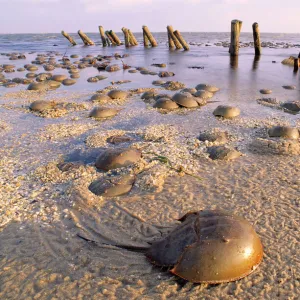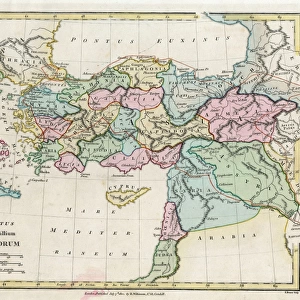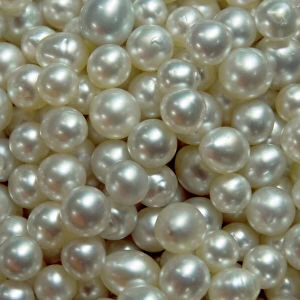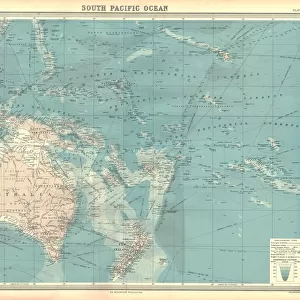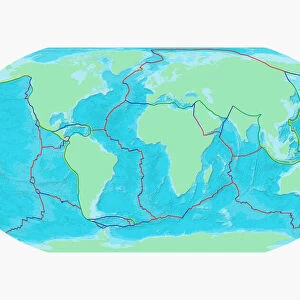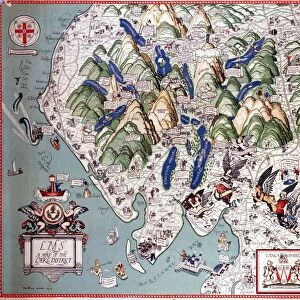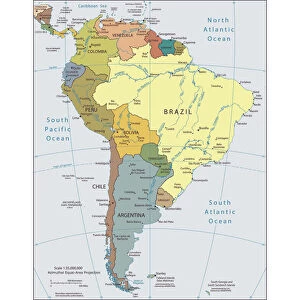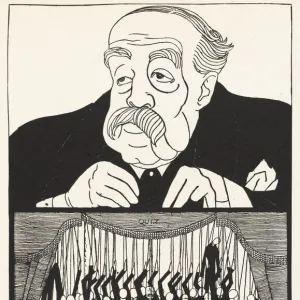Metal Print > Arts > Artists > O > Oceanic Oceanic
Metal Print : Reconstruction of the rich marine life of the Cambrian era
![]()

Metal Prints from Mary Evans Picture Library
Reconstruction of the rich marine life of the Cambrian era
Reconstruction of the rich marine life of the Cambrian era. Extinct crinoids, jellyfish, coral and horseshoe crabs. Illustration by Hugo Wolff-Maage from Wilhelm Bolsches Das Leben der Urwelt, Prehistoric Life, Georg Dollheimer, Leipzig, 1932
Mary Evans Picture Library makes available wonderful images created for people to enjoy over the centuries
Media ID 23381576
© Florilegius
Atlantis Bolsche Cambrian Continents Creature Dinosaurs Extinct Indonesian Jurassic Leben Paleontology Peninsula Prehistoric Prehistory Reconstruction Rich Seas Shetland Strait Urwelt Wilhelm Tethys Upper
14"x11" (28x35cm) Metal Print
Step back in time with our stunning Media Storehouse Metal Print of the Reconstruction of the Rich Marine Life of the Cambrian Era. This captivating illustration, sourced from Mary Evans Picture Library, brings to life the extinct wonders of the ancient sea. Featuring intricately detailed depictions of prehistoric crinoids, jellyfish, coral, and horseshoe crabs, this print by Hugo Wolff-Maage from Wilhelm Bolsches Das Leben der Urwelt is a mesmerizing addition to any home or office. Our high-quality metal prints are known for their vibrant colors, rich textures, and long-lasting durability. Experience the beauty of the past like never before with this unique and intriguing piece.
Our Metal Prints feature rounded corners and rear fixings for easy wall mounting. Images are directly printed onto a lightweight, high quality 5mm thick, durable metallic surface for a vivid and vibrant finish. Available in 2 sizes, 28x35cm (14x11) and 50x40cm (20x16). The unique material is fade, moisture, chemical and scratch resistant to help ensure this art lasts a lifetime.
Made with durable metal and luxurious printing techniques, metal prints bring images to life and add a modern touch to any space
Estimated Product Size is 35.5cm x 27.9cm (14" x 11")
These are individually made so all sizes are approximate
Artwork printed orientated as per the preview above, with landscape (horizontal) or portrait (vertical) orientation to match the source image.
FEATURES IN THESE COLLECTIONS
> Mary Evans Prints Online
> New Images August 2021
> Animals
> Crustaceans
> Crab
> Animals
> Crustaceans
> Horseshoe Crab
> Animals
> Extinct
> Dinosaurs
> Arts
> Artists
> O
> Oceanic Oceanic
> Asia
> Indonesia
> Related Images
> Asia
> Related Images
> Maps and Charts
> Related Images
> North America
> Related Images
EDITORS COMMENTS
This illustration by Hugo Wolff-Maage, from Wilhelm Bolsche's seminal work "Prehistoric Life" published in 1932, offers a vivid reconstruction of the rich marine life that flourished during the Cambrian era, around 541 to 485 million years ago. The illustration showcases a diverse array of extinct marine organisms that once inhabited the Earth's oceans during this pivotal period in the planet's biosphere. The upper portion of the image depicts the Northern Hemisphere with the North American and European continents, the Indonesian peninsula, and the Tethys Ocean. Swimming in these ancient waters are a myriad of creatures, including crinoids or sea lilies, with their elegant arms extended, filtering food from the water. Jellyfish, with their delicate, translucent bodies, drift gracefully through the water, while horseshoe crabs, with their distinctive horseshoe-shaped bodies and pincer-like limbs, scuttle along the seafloor. The lower portion of the image represents the Southern Hemisphere, featuring the Shetland Strait and the Atlantic and Antarctic Oceans. Here, a diverse array of marine life thrived, including various mollusks, echinoderms, and other invertebrates. The illustration's vibrant colors and intricate details bring to life the wonders of the Cambrian era, a time when the first complex multicellular organisms appeared on Earth and paved the way for the development of more complex life forms, such as fish, amphibians, and eventually, dinosaurs. This illustration is a testament to the rich history of zoology and paleontology, offering a glimpse into the fascinating world of prehistoric marine life and the evolution of our planet's biosphere.
MADE IN AUSTRALIA
Safe Shipping with 30 Day Money Back Guarantee
FREE PERSONALISATION*
We are proud to offer a range of customisation features including Personalised Captions, Color Filters and Picture Zoom Tools
SECURE PAYMENTS
We happily accept a wide range of payment options so you can pay for the things you need in the way that is most convenient for you
* Options may vary by product and licensing agreement. Zoomed Pictures can be adjusted in the Cart.









